See the future skyscrapers that are about to transform Melboiurne’s skyline
Melbourne is set to dwarf Sydney’s skyline with a rash of new towers that will make our city the nation’s skyscraper capital. See how Melbourne will look when at least 20 new towers are built.
VIC News
Don't miss out on the headlines from VIC News. Followed categories will be added to My News.
More than 20 new skyscrapers are set to transform Melbourne’s skyline as the unprecedented boom leaves Sydney in its wake.
The enormous towers — all at least 150m — have a combined value in the tens of billions of dollars and would stretch an astounding 3km if laid end-to-end.
Their construction will cement Melbourne as Australia’s skyscraper capital.
MORE: WHO OWNS MELBOURNE’S BUILDINGS: LOGIE WINNER, FOREIGN NATIONS
BANK OF MUM AND DAD HAS 10,000 NEW CUSTOMERS IN VICTORIA
The international Council on Tall Buildings and Urban Habitat already ranks Melbourne 27th in the world based on the number of skyscrapers, with 43 already in the city.
Those to be built over coming years will boost the figure into the 60s.
Sydney has just 35 skyscrapers with seven approved or under construction.
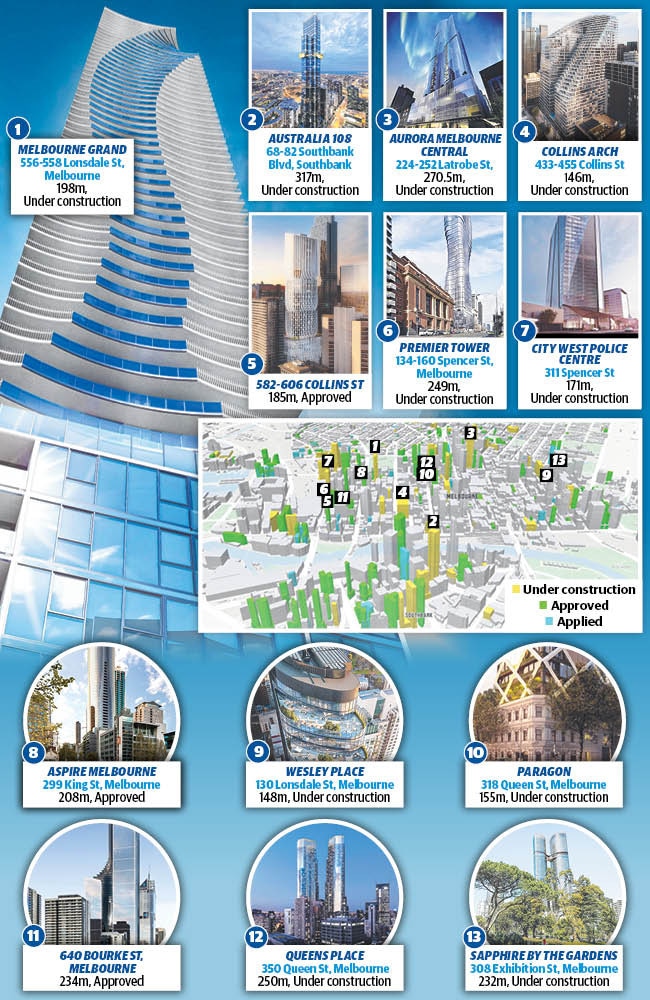
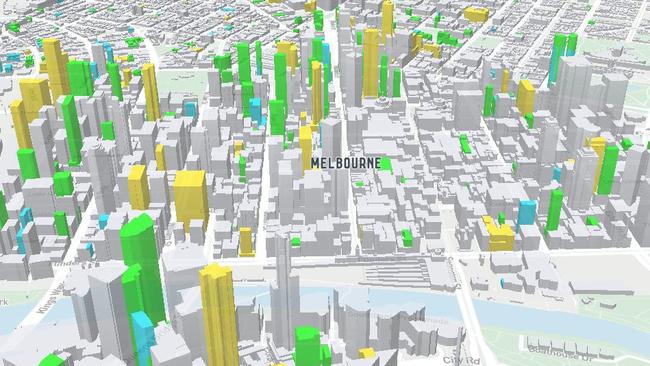
The 21 new towers will house a whopping 11,200 apartments and 20,000 people, as well as 1000 new hotel rooms, while 244,000sq m of office space will accommodate 15,000 jobs.
Many more just below the height will also transform the city’s skyline with ambitious designs.
Melbourne City Council planning portfolio chair councillor Nicholas Reece said they won’t just be “featureless glass towers” or “spreadsheets in the sky for developers”.
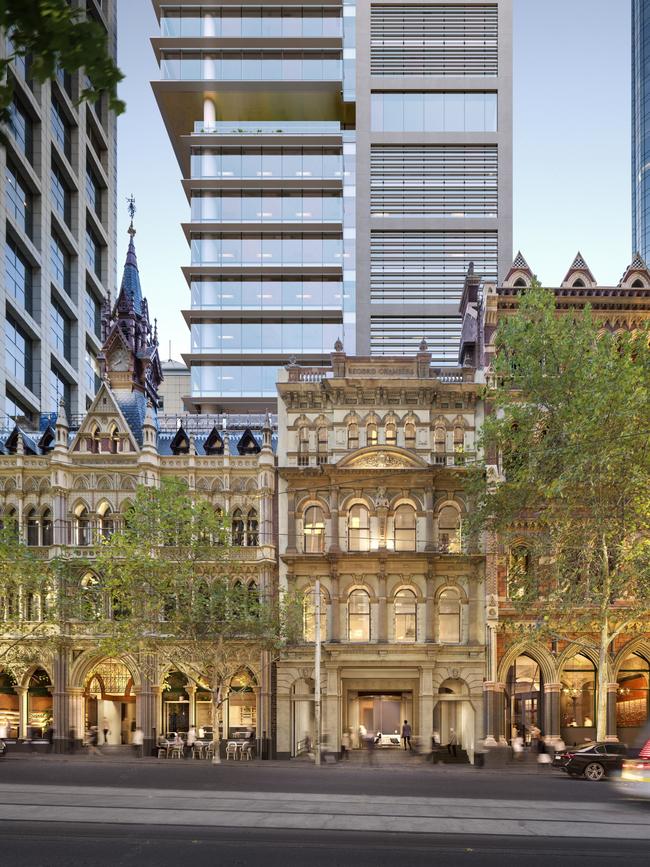
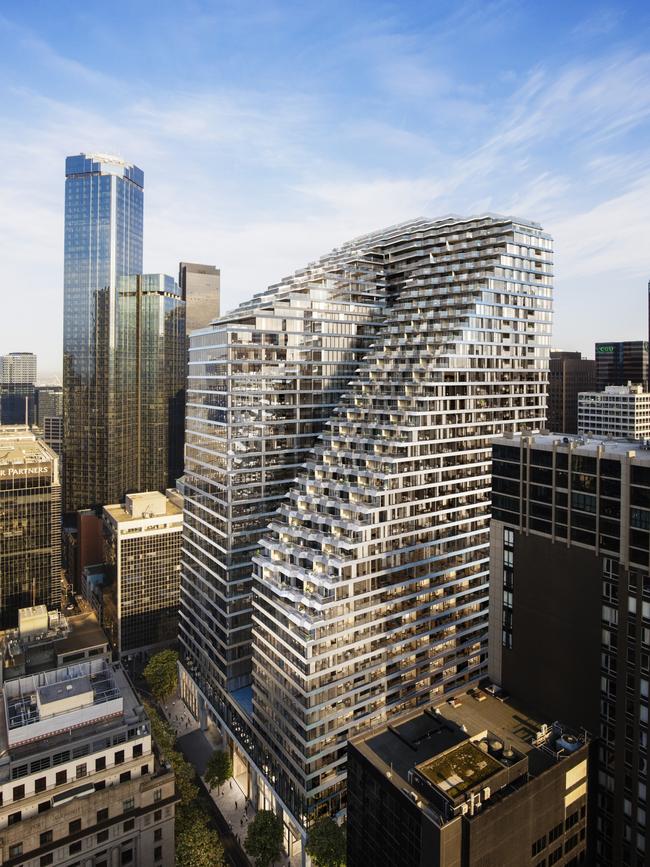
“We want every building and every place to contribute a public value legacy and add to the civic life of our city, that our kids will proudly point to in years to come as a part of what makes Melbourne special,” Mr Reece said.
International influences will see buildings linked by skybridges more than 100m off the ground and a 317m super skyscraper set to become the city’s tallest as a series of eye-catching structures take shape on the city skyline.
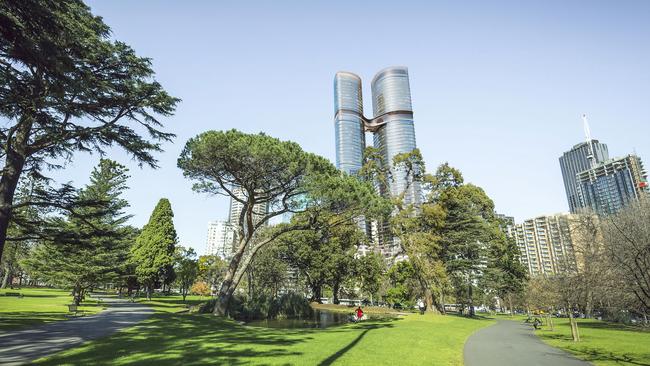
Chinese, Malaysian and Singaporean-backed developers are attached to nine of the projects, including $1 billion multi-tower complexes Queens Place on Queen St and West Side Place on Spencer St.
World Class Land — a subsidiary of Singapore’s Aspial group — is part way through building the city’s soon-to-be tallest tower, the 100-storey, $900 million project named Australia 108 in Southbank.
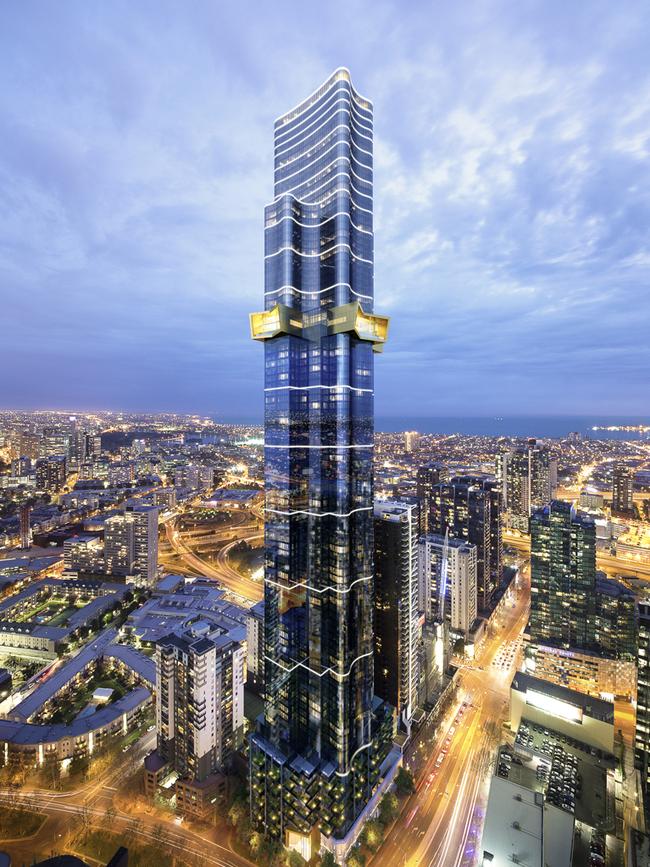
Planning Minister Richard Wynne said CBD development had “delivered new apartments in record numbers” and lured some of the world’s best skyscraper designers — including the late Zaha Hadid — to the city.
But planners had worked hard to ensure towers would not turn the city’s streets into dark, windy corridors — slashing the heights and tweaking designs on a number of the towers early on to “protect the city’s character” and “maintain the city’s look and feel”.
“New planning rules mean towers cannot overshadow the Yarra River, St Kilda Road and the Shrine of Remembrance,” Mr Wynne said.
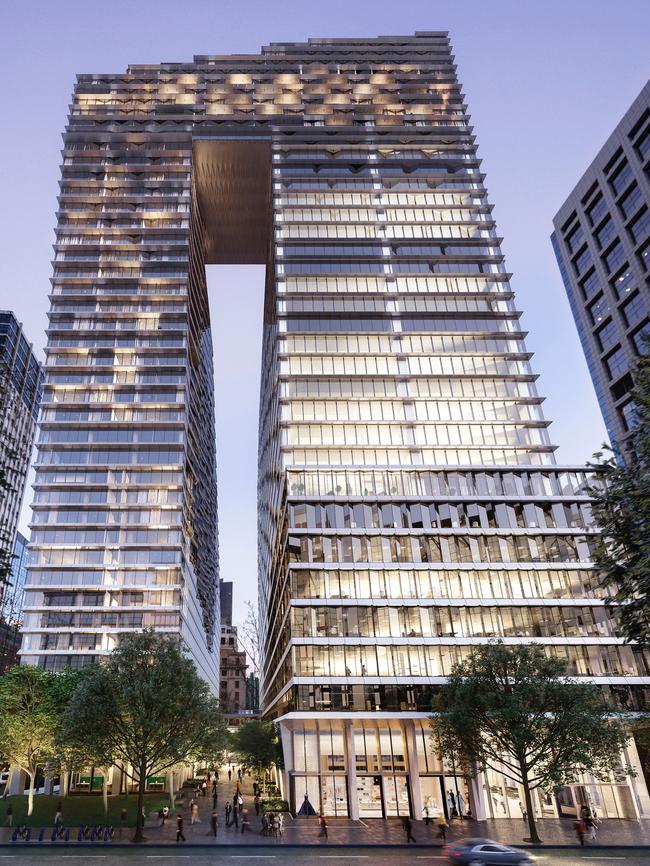
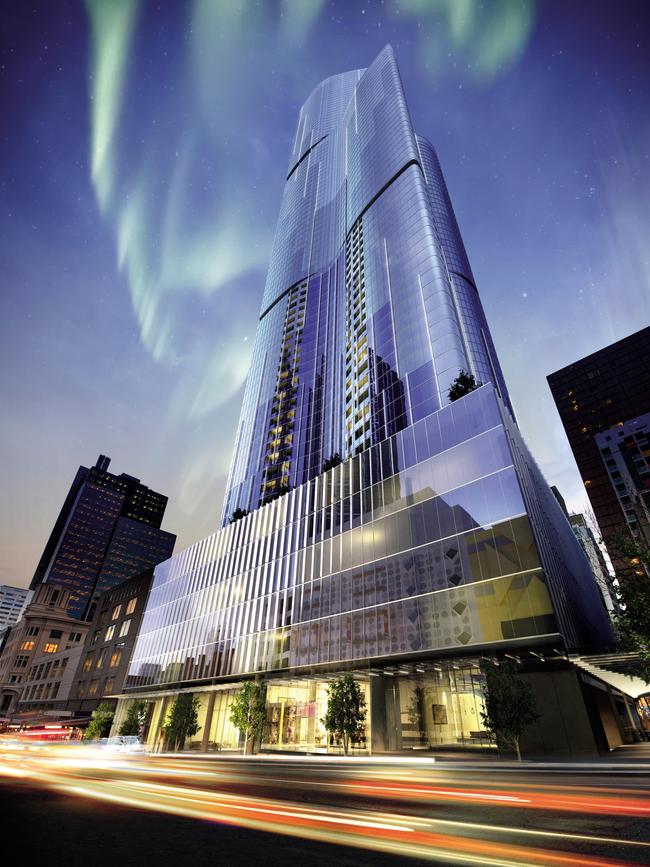
CBUS Property’s Collins Arch — nicknamed the ‘pantscraper’ — was cut from 168m to 146m to protect the Yarra River.
Traffic in the city has also been factored in with many towers to provide fewer parking spaces than apartments.
“Our research has found that 40 per cent of people who own residential car parks in the central city do not own a car,” Cr Reece said.
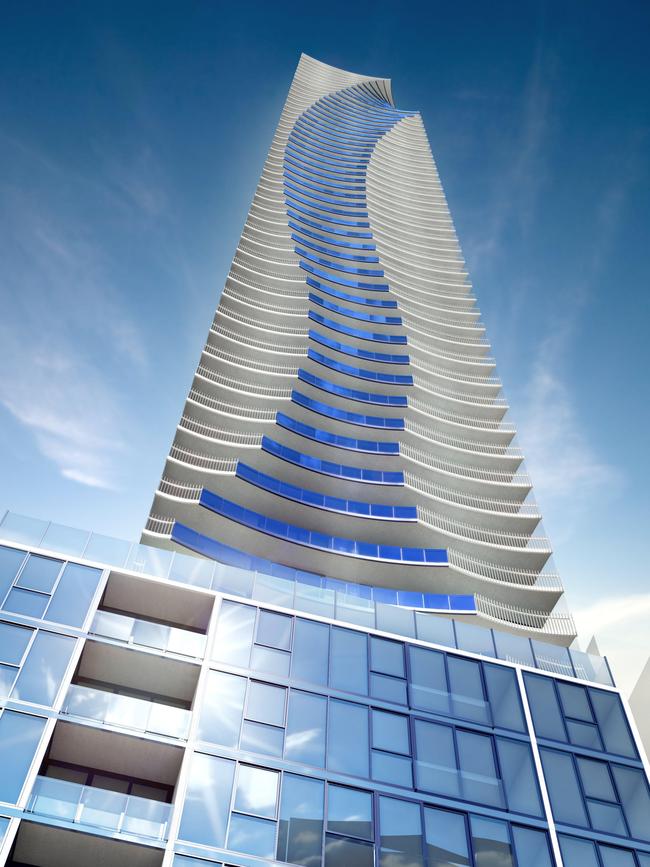
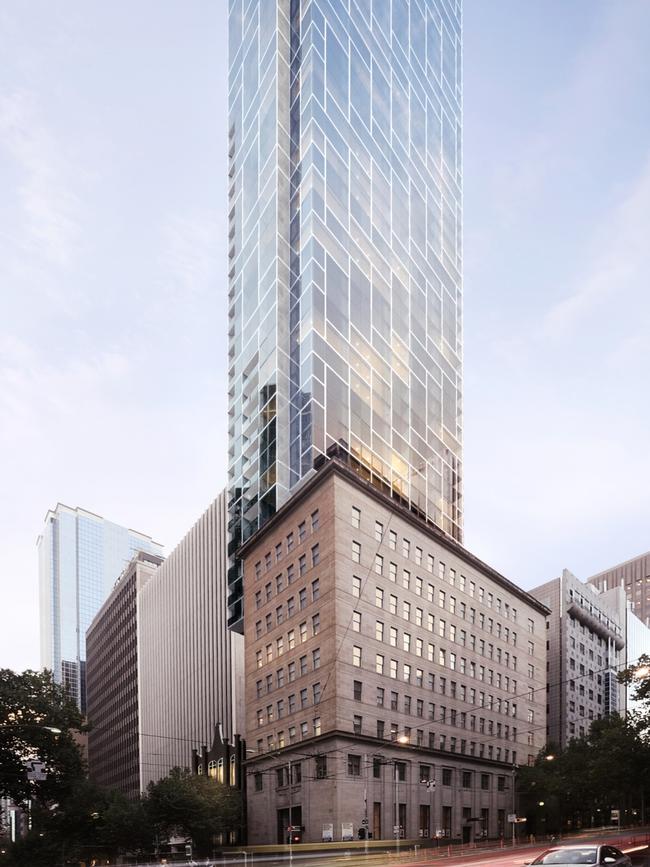
CTBUH editor Daniel Safarik said Melbourne’s rising price for development sites had contributed to a raft of unique designs.
“As land becomes more scarce in desirable areas, “creativity” needs to be increased in order to wring a profit from the site,” Mr Safarik said.
Bates Smart director Julian Anderson said rising residential property prices had helped “create the huge appetite for these apartments”.
While the current wave of apartment towers would be dominated by residential space, the city’s market correction had already begun to shift the focus to commercial towers.
The architectural firm’s Collins House residential tower being built at 466 Collins St will become the world’s fourth slimmest skyscraper.
But tighter planning controls meant we would never see a 20 tall-tower boom again, Mr Anderson said.


